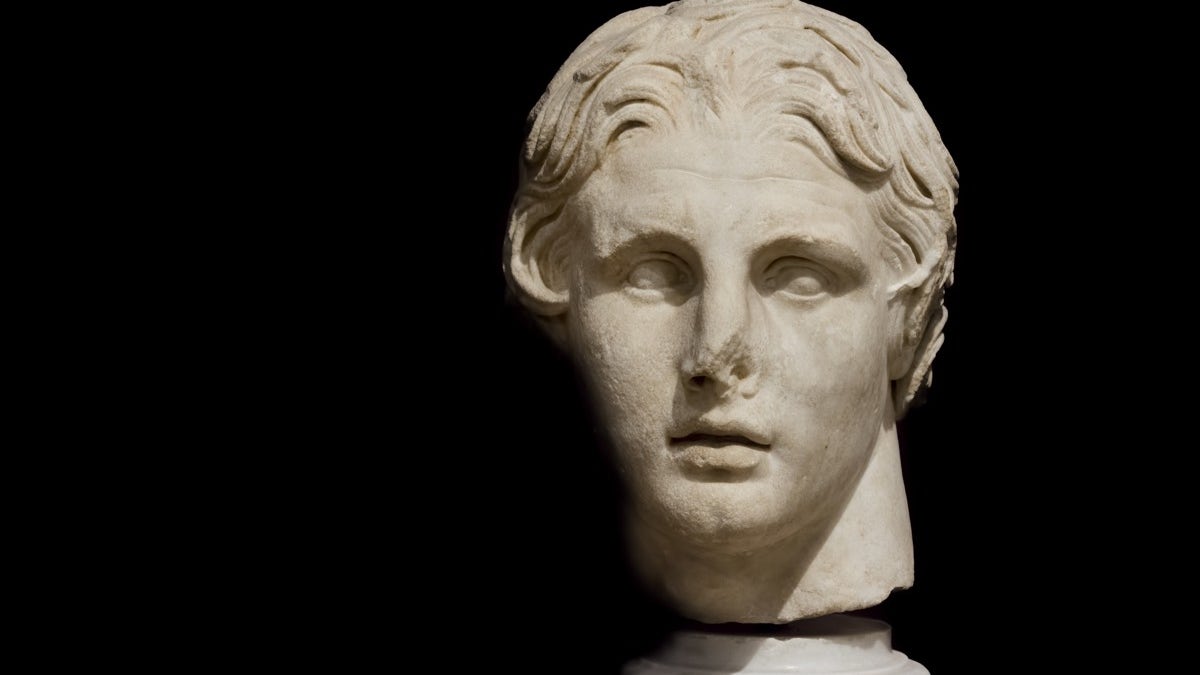
The bust of Alexander the Great at Istanbul Archeology Museum in Turkey. (Shutterstock)
Archaeologists have discovered a stunning, albeit noseless, bust of Alexander the Great, but not from an ongoing excavation located in Alexander's ancient, sprawling empire.
Rather, the marble statue was found sitting, "lost in a dark corner of the warehouse" at the Archaeological Museum of Veroia, in Greece, according to a July 31 Facebook post by Angeliki Kottaridi, a director at the Hellenic Ministry of Culture and Sports. [Top 10 Reasons Alexander the Great Was, Well ... Great!]
The bust likely dates to the second century B.C., about 200 years after Alexander the Great died at age 32 in 323 B.C., Kottaridi said.
Curators were taking stock of the warehouse when they spotted the sculpted head resting "between crates with ceramic, half under old mortars and pollutants," Kottaridi wrote in the post (translated from Greek with Google Translate). "I saw him … despite the wounds left on his beautiful face by the ages and ignorance," she said, noting the detail to his wild hair and "dream eyes."
More From LiveScience
The statue had undergone wear and tear over the years (hence, the broken nose). "It was sprinkled with mortar because it had been used on a wall — sometime in the 18th [to] 19th centuries — as building material," Kottaridi said, according to the Athens-Macedonian News Agency (AMNA).
Upon finding the statue in the rubble of a Greek village, archaeologists collected it, put it in storage and promptly forgot about it. "No one recognized that it was Alexander," Kottaridi said, according to AMNA.
But Kottaridi said she immediately knew the approximately 2,100-year-old statue was the great conqueror, whose vast empire stretched from the Balkans to modern-day Pakistan. She and her colleagues had the statue cleaned and plan to put it on display at the end of 2020 in the Museum of Royal Tombs of Aigai, in Vergina, where Kottaridi is the director.
- Photos: Ancient Greek Shipwreck Yields Antikythera Mechanism
- Photos: Mysterious Ancient Tomb in Amphipolis
- Photos: The Largest Underwater Sculpture
Originally published on Live Science.




















